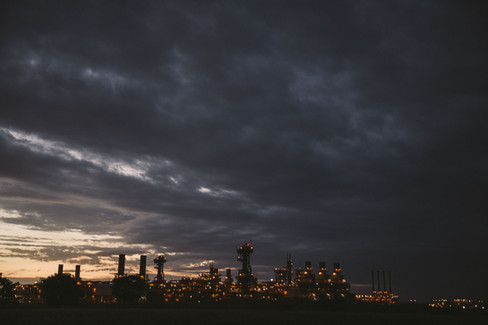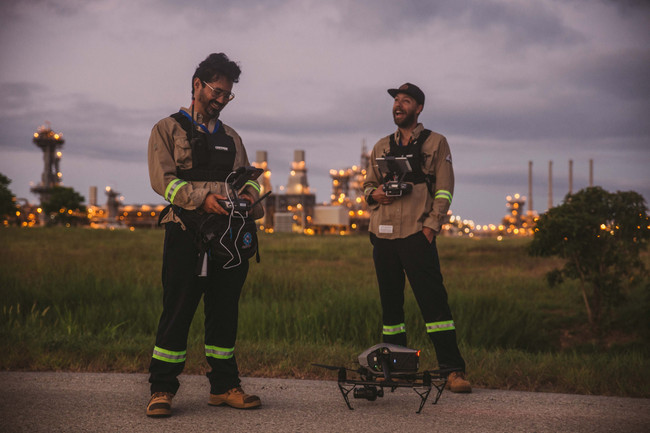Drone Work for ExxonMobil PNG
- westwoodcaleb
- Nov 14, 2024
- 4 min read
Humanity || Exxon Mobil, Papua New Guinea

The Job Brief
In 2019 a contact of mine reached out asking me to assist him on a job for ExxonMobil in Papua New Guinea. The job was to capture drone footage, drone photos and 360 drone footage of the existing gas fascilities and proposed locations for new developments. We were in Papua New Guinea for almost 2 weeks as there were multiple sites we had to visit across PNG. I was brought onto the team to help assist him and the pilot with literally the heavy lifting, charging batteries, additionally to capture some BTS content.
Drone team: MEDIAIDEM by Ken Butti
ExxonMobil PNG
Exxon Mobil manages an industry-leading portfolio of resources, and is one of the largest integrated fuels, lubricants and chemical companies in the world. ExxonMobil is the largest non-government-owned company in the energy industry and produces about 3% of the world's oil and about 2% of the world's energy.
What makes Papua New Guinea a place of interest is that it's the 18th largest producer of natural gas, with a total of 5 trillion cubic feet of proven gas reserves. This is enough to last about 1,415 years at current consumption levels. Currently ExxonMobil's PNG LNG project in Papua New Guinea has the capactiy to produce and export over 8 million tonnes of liquefied natural gas (LNG) annually.
Positive Community Impact
ExxonMobil's projects have also been responsible for significant economic development in Papua New Guinea, including:
Community Programs
ExxonMobil's community program focus on education, health, agriculture, and womens empowerment.
Royalties
Landowners receive royalties paid into a trust account managed by the PNG government.
Economic Impact
The project has had a signficant economic impact on Papua New Guinea, a country with a per capita income under $3,000 a year.
Earthquake Assistance
Additionally on 26th of February 2018, a 7.5 magnitude earthquake struck the Highlands of Papua New Guinea. Over 544,000 people were impacted and ExxonMobil PNG assisted with initial humanitarian relief by purchasing and transporting food, water, shelter and health items.
Infrastructure
Some parts of Papua New Guinea are difficult to navigate due to it's terrain, ExxonMobil is also assisting the government with building infrastructure, key roads and bridges.
Welcome to Papua New Guinea
Papua New Guinea is located just 741km north from Cape York, the most northern part of Australia. So after a flight from Sydney to Brisbane, an underestimated layover time in Brisbane, we finally made it to Port Moresby, Papua New Guinea with most of our gear. Unfortunately some gear got lost in transit but lucky for us we were able to shuffle the plans around until our gear arrived two days later.

Drone shot one of many
The first location we visited was the LNG Plant that is located just 20 kilometres northwest of Port Moresby, at Caution Bay on the south coast of PNG's Central Province. The entire time we were in PNG we always were accompanied by staff, so they picked us up and conveyed us and all our gear out to the plan for our first take off.
That night we stade on sight in the same accomodation as the LNG Plant workers, as we had an early start the following day requiring us to be on site before sunrise.
360 Drone
Part of the work we were doing was to capture 360 drone content to give a more immersive viewing experience as people navigate all the different sites.

LNG Process
After the natural gas has travelled the 700 kilometre long pipeline from the Highlands it reaches the LNG Plant in Caution Bay, here the natural gas is then turned into Liqefied Natural Gas (LNG). LNG is an extremely cold, colourless and odourless liquid that is produced when natural gas (mostly methane) is cooled to approximately -160C. Doing so reduces the volume of the gas therefore making it easier and safer to store, and more economical to transport. Once the LNG is transported across the world on LNG carriers, it is then warmed and 'regassified', making it usable for industry, electrictiy generation and in homes for heaing and cooking.
Showcased below you can see the flare stack (tower with the flame atop it) that's purpose is to burn off excess gas to manage pressure and prevent dangerous fires. Then proposed sites for new LNG specialised storage tanks.
Above is the marine fascility where 8 million tonnes of LNG is exported on more than 100 cargo ships every year.

Inside the LNG Plant
This plant prepares the natural gas removing any impurities and cooling the gas down to -160C before storing it, ready to be transported to the marine fascility and then the cargo ships.
Relocated to the Highlands
We finished up at the LNG Plant down at Caution Bay, 20 kilometres from Port Moresby and then we flew 541 kilometres into the Highlands. Once we arrived we were greated by a very large convoy of fortified vehicles and police to securely escort us to the next plant. In some areas of Papua New Guinea there has been tribal fights near some plants and even been threats against the plant, so extra precaution and security is taken when travelling these regions.
Highlands Plant
The Hides Gas Conditioning Plant (HGCP) seperates gas, condensate and water before being treated then sent via seperate pipelines to other fascilities.

Early morning to capture the plants glow in the night sky.
The Highland Pipelines
The final stop of our trip was to visit the pipelines up in the highlands that the natural gas travels down before reach the HGCP.
This terrain is very hilly, the vegetation is think and one second you can see blue sky then the next you're in thick cloud cover. So flying a drown in these conditions made it very tricky to get any clear visuals of our subjects and even keeping your eye on the drones location.
Pleasently surprised by ExxonMobil
Being able to go on this trip and work for ExxonMobil was a great experience, the work it self was very rewarding but additionally I really appreciated getting to learn and witness first hand how ExxonMobil has worked with the local communities, growing the PNG economy, seeing the values they stand for in person and even learning more about gas.
So I hope you've enjoyed being able to see the BTS content from this project and receiving a different perspective of the work of those at ExxonMobil PNG and the team I worked with.
Drone team: MEDIAIDEM by Ken Butti









































































































































































